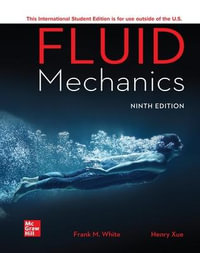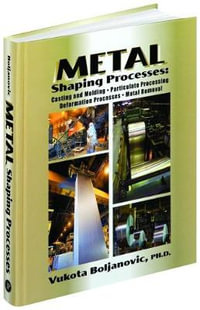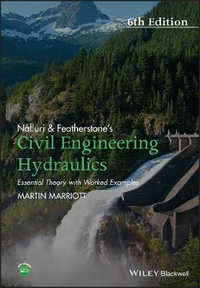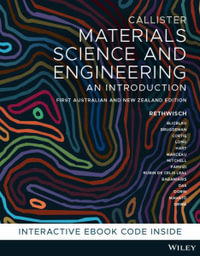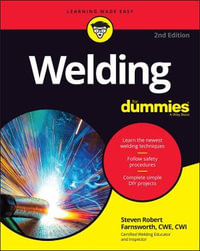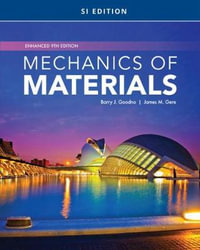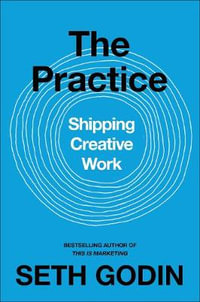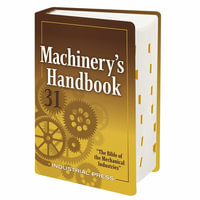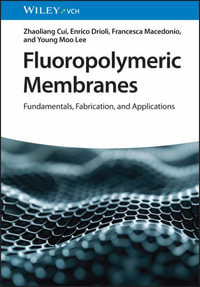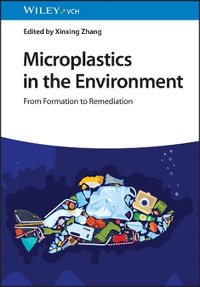Acknowledgements.
Preface.
1. Introduction - Background and Reasons for Using Rubber as
a Construction Material.
1.1 Background.
1.2 Elastomer.
1.3 Polymer.
1.4 Rubber.
1.5 Rubber Dampens.
1.6 Rubber Seals.
1.7 Rubber Protects Corrosion Effects.
1.8 Rubber Gives Thermal Insulation.
1.9 Rubber Gives Passive Fire Protection.
1.10 Rubber is Ablative.
1.11 Rubber wears.
1.12 Rubber Bonds with Metal.
1.13 Rubber is Impermeable.
References.
2. Rubber Compounding.
2.1 Background.
2.2 Compounding.
2.3 Scope of Compounding.
2.4 Basic Compounding Formulation.
2.5 Property Requirements of Un-vulcanized Rubber.
2.6 Property Requirements of Vulcanized Rubber.
2.7 Basic Changes in Properties.
2.8 Compounding Ingredients.
3. Ebonite-Problems and Solutions.
3.1 Liquid Ebonite.
3.2 Rubber-sulphur Reaction.
3.3 Retarding Accelerators.
3.4 Coefficient of Vulcanization.
3.5 Synthetic Rubbers Which Can Be Converted into Ebonite.
3.6 Technological Aspects of Ebonites.
3.7 Uses of Ebonites.
3.8 Main Properties Exhibited by Ebonites.
3.9 Processing of Ebonite.
3.10 Vulcanization in Relation to Properties.
3.11 Rubber-sulphur Ratio and Cure Time.
3.12 Curing Temperature.
3.13 Method of Cure.
3.14 Shrinkage During Cure.
3.15 Shape Reduction During Cure.
4. Rubber Lining - Types and Application Procedures.
4.1 What is Rubber Lining?
4.2 Types of Corrosion.
4.3 Materials Selection.
4.4 Performance Tests.
4.5 Maintenance Requirements.
4.6 Control of Operating Conditions.
4.7 Corrosive Chemicals.
4.8 Codes of Practice Relating to Corrosion.
4.9 Types of Rubber Lining.
4.10 Application Procedures for Rubber Lining.
4.11 Role of Impurities.
4.12 Working Temperature.
4.13 Lining Thickness.
4.14 Adhesive Coating.
4.15 Application of Calendered Sheet.
4.16 Inspection of Rubber Lining.
4.17 Sheet Dimensions.
4.18 Sheet Laying and Rolling.
4.19 Lining Procedure for Pipes.
4.20 Storage of Rubber Lined Pipes.
4.21 Design and Fabrication of Lining Supports for Handling
Lined Equipment.
4.22 Surface Preparation for Rubber Lining.
4.23 Methods of Surface Preparation.
4.24 On Site Rubber Lining.
5. Rubbers and Their Relevant Properties for the
Chemical and Mineral Processing Industries.
5.1 Historical Aspects.
5.2 Elastomer Types According to American Society of Testing
Materials-ASTM D2000.
5.3 Mullins Effect.
5.4 Payne Effect.
5.5 The Reversibility.
5.6 Resistance to Wear and Tear.
5.7 Chemical Compatibility.
5.8 Glass Transition Temperature.
5.9 High Temperature Behaviour.
5.10 Fluid Resistance.
5.11 Incompressibility.
5.12 Natural Rubber.
5.13 Synthetic Polyisoprene (IR).
5.14 Styrene Butadiene Rubber (SBR).
5.15 Butadiene Rubber.
5.16 Butyl Rubber (IIR).
5.17 Chlorobutyl (CIIR) and Bromobutyl (BUR).
5.18 Ethylene Propylene Rubbers (EPM and EPDM).
5.19 Polychloroprene (CR).
5.20 Nitrile Rubbers.
5.21 Chlorosulphonated Polyethylene (CSM).
5.22 Silicone Rubber.
5.23 Thiokol or Polysulphide Rubbers (T).
5.24 Polyurethane (AU or EU).
5.25 Fluoroelastomers (FKM).
6. Design Considerations for Fabrication of Equipment
Suitable for Rubber Lining.
6.1 Mild Steel Vessels.
6.2 Pipes and Fittings.
6.3 Metal Defects Detrimental to Rubber Lining.
7. Chemical Process Plants and Equipment.
7.1 The Chemical Process.
7.2 Flue Gas Desulphurization Systems (FGD).
7.3 Water and Waste Water Treatment Equipment.
7.4 Nuclear Power Water Treatment Plant.
7.5 Radiation Units.
7.6 Phosphoric Acid Equipment.
7.7 Hydrochloric Acid Handling Equipment.
7.8 Sodium Hypochlorite and other Bleach Equipment.
7.9 Gold Ore Processing Equipment.
7.10 Equipment for Evaporation.
7.11 Crystallizer.
7.12 Dryers.
7.13 Cyclone Separators.
7.14 Thickeners.
7.15 Perforated Plates.
7.16 Industry Equipment and Components.
8. Processibility and Vulcanization Tests.
8.1 Critical Properties of Rubber.
8.2 Scorch.
8.3 Rate of Cure.
8.4 State of Cure.
8.5 Cure Time.
8.6 Over Cure.
8.7 Processibility.
8.8 Plasticity.
8.9 Plasticity Tests.
8.10 Plasticity and Viscosity Test Methods.
8.11 Residual Scorch.
8.12 Vulcanization Studies.
8.13 Vulcanization Test.
8.14 Density of Solids.
8.15 Hardness.
8.16 Spark Testing.
8.17 Immersion Test
8.18 Specifications and Codes of Practice.
9. Rubber to Metal Bonding.
9.1 The Rubber Bonding Process.
9.2 The Bonding Layer.
9.3 Selection of Bonding Agents.
9.4 Choice of Substrate.
9.5 The Bonding Process.
9.6 Application of Bonding Agents.
9.7 Adhesive Manufacture for Ebonite Bonding.
9.8 Moulding of Rubber-Metal Bonded Product.
9.9 Compounding of Rubber for Metal-Rubber Bonding.
10. Vulcanization Technology.
10.1 Principles of Vulcanization.
10.2 Sulphur and Sulphurless Vulcanization.
10.3 Peroxide Vulcanization.
10.4 Vulcanization Conditions.
10.5 Techniques of Vulcanization.
10.6 Control of Production Cures.
10.7 Vulcanization Time.
10.8 Common Defects in Vulcanizates.
11. Rubber in Seawater Systems.
11.1 Seawater.
11.2 Design Considerations in Seawater Corrosion Protecting
System.
11.3 Epoxy Resin.
11.4 Elastomeric Polyurethane Coating.
11.5 Surface Preparation Methods.
11.6 Specific Corrosion Protection Measures.
11.7 Intake Water Tunnels.
11.8 Trash Rack and Traveling Water Screens.
11.9 Condenser Water Boxes.
11.10 Condenser Tubes and Tube Sheets.
11.11 Piping, Pumps and Heat Exchangers.
11.12 Field Observations.
11.13 Material of Construction for Seawater Based Systems in
Nuclear Power Plants [1].
12. Rubber in Oil Field Environment.
12.1 Well Fluid.
12.2 Completion Fluid.
12.3 Stimulation Fluid.
12.4 Explosive Decompression.
12.5 Effect of Increasing Molecular Weight.
13. Calendering of Rubber and Coated Rubber Sheets.
13.1 Calendering Machine.
13.2 Calender Design Features.
13.3 Fabric Coating-Topping.
13.4 Frictioning.
13.5 Rubber Sheets.
13.6 The Art of Calendering.
14. Moulding Technology.
14.1 Factors in Moulding.
14.2 Types of Moulding Process.
14.3 Press Curing.
14.4 Moulding of Hollow Parts.
14.5 Moulding Shrinkage.
14.6 Mould Lubricants.
14.7 Moulding Defects.
15. Service Life of Rubber-lined Chemical Equipment.
15.1 Materials that Improve the Ageing of Vulcanizates.
15.2 Oxidation.
15.3 Heat.
15.4 Flexing.
15.5 Ozone.
15.6 Light.
15.7 Sulphur.
15.8 Metals.
15.9 Fluids.
15.10 l Predicting Life of Lining.
15.11 Hydrochloric Acid Tank Lining Life.
15.12 Residual Life of Natural Rubber Lining in a Phosphoric
Acid Storage Tank.
15.13 Immersion in Fluids.
16. Case Studies.
16.1 Case Study: Space Shuttle Challenger Disaster.
16.2 Case Study: Hinkle Reservoir.
16.3 Case Study: Ammonium Nitrate Explosion.
16.4 Case Study: "O"Ring Failure.
16.5 Case Study: Pebble Mill.
16.6 Case Study: Rubber and Ceramic Liners.
16.7 Case Study: Flue Gas Desulphurizing.
16.8 Case Study: Wrong Selection of Curing Method.
Glossary of Terms.
Appendix 1. ASTM Elastomer/Rubber Designations.
Appendix 2. Properties of Specialty Rubbers.
Appendix 3, Temperature-Pressure Equivalents of Saturated
Steam.
Appendix 4. List of Suppliers Who Publish Technical
Literature on Rubbers and Chemicals.
Bibiliography.
About the Author.
Index.









